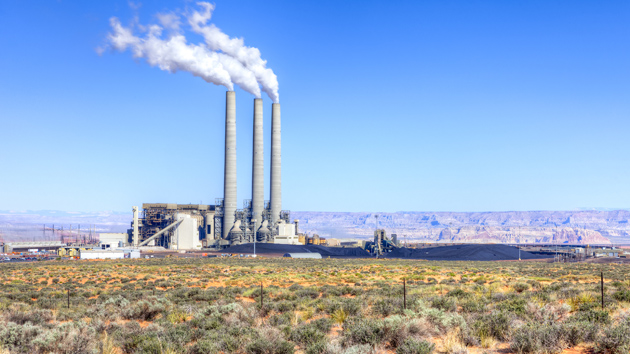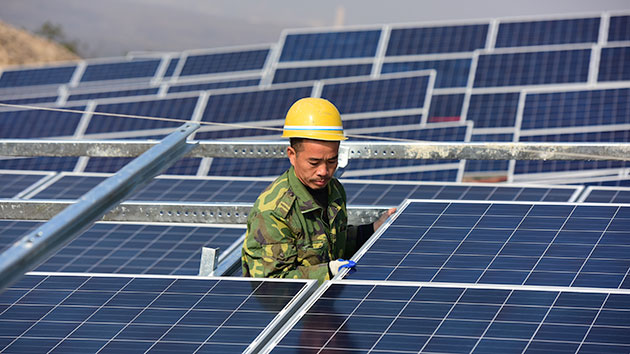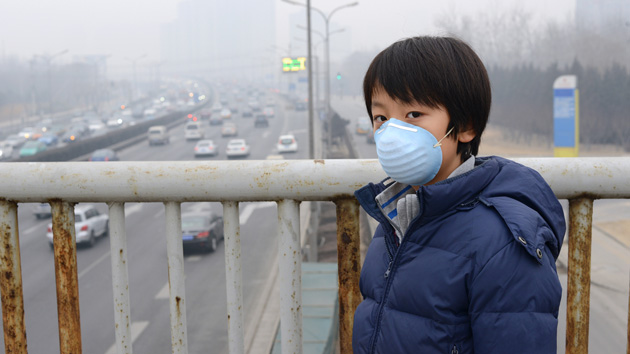
<a href="http://www.shutterstock.com/pic-246312967/stock-photo-coal-power-plant-with-smoke-stacks.html?src=iBu1PaeTRSTXHU5O4tYiAA-2-73">Anton Foltin</a>/Shutterstock
This story originally appeared in the Huffington Post and is reproduced here as part of the Climate Desk collaboration.
Finance is full of big numbers, and for almost every big number, there is another, even bigger number it should be compared to.
Climate change is no different. As world leaders meet for climate talks in Paris, here’s the big number: In 2014, the world invested $391 billion in low-carbon and climate-resilient infrastructure. And here’s the even bigger number: We should actually be spending $7 trillion dollars a year for the next decade, and even more later.
The International Energy Agency estimated in a recent report that the world needs to spend $359 trillion between now and 2050 to avoid catastrophic climate change.
It isn’t just that we’re not investing enough money; we’re not investing enough money by a factor of more than 17. And that’s a moral, economic and geopolitical failure.
Meanwhile, if we don’t do anything to try to limit climate change, the world will spend $318 trillion by 2050 on the kind of greenhouse gas-producing energy and transportation infrastructure that actually fuels climate change. To limit climate change, that money needs to be spent on clean infrastructure, not dirty energy projects. And beyond shifting the money we are already projected to spend on dirty energy to clean infrastructure, the world needs to invest an additional $40 trillion over 35 years to keep the rise in global temperatures below 2 degrees Celsius.

The extra $1 trillion per year investment in clean energy that is needed, above and beyond what we are already projected to spend, has been dubbed the “clean trillion” by nonprofit sustainability advocacy group Ceres, and that’s what we should really be aiming for. “The world needs to be shifting trillions into clean energy, not just billions,” Christopher Fox, a director at Ceres, told The Huffington Post.
Unfortunately, countries aren’t yet making the commitments needed to limit climate change to 2 degrees Celsius, said Uwe Remme, an energy modeler at the IEA. But if countries retire old coal plants and take other measures to promote energy efficiency by 2020, those efforts could put us back on track to limiting climate change, Remme said.
To address climate change in the long term, countries should be focusing their trillions of dollars in infrastructure spending on building a low-carbon economy that won’t exacerbate the problems we already have.
“Combating climate change requires shifting global investment from fossil fuels to clean energy,” Fox said.
In the end, our challenge isn’t about finding the money to fight climate change — the money is there, but it’s being spent on the wrong things.
“The world needs to decide,” said the U.N.’s chief climate negotiator, Christiana Figueres, in November. Is our money “going to go into clean technology, clean infrastructure, and above all, resilient infrastructure—or is it going to go into the technologies and infrastructure of the last century?”














